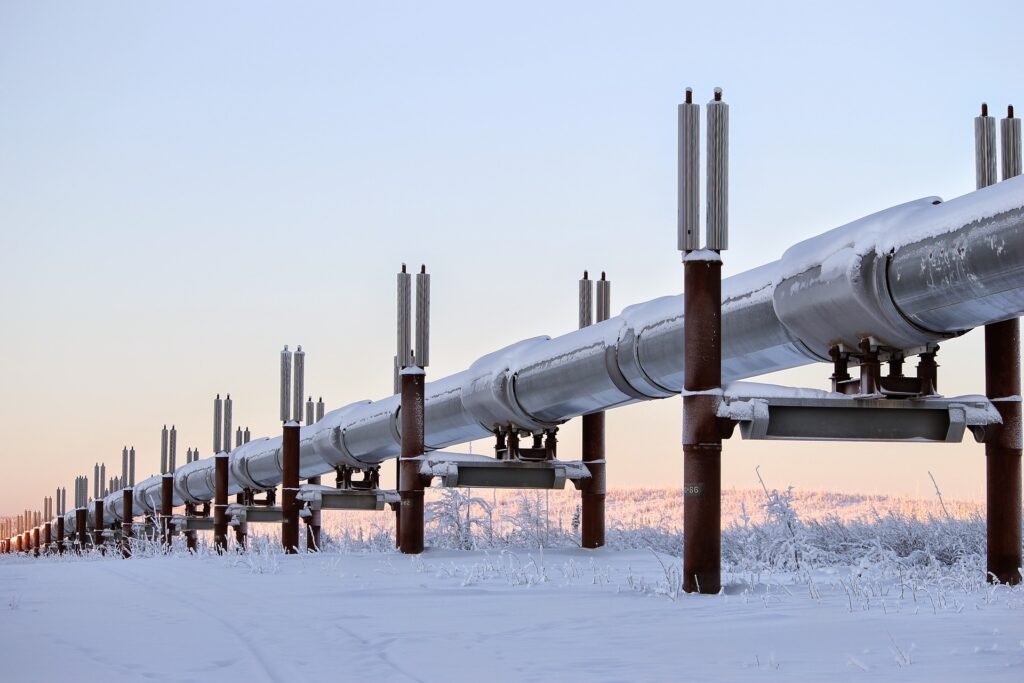The limits of using US LNG to save the EU: not enough infrastructures and a tricky global LNG price
Highlights from the FSR Talk: “Can US LNG save the EU from Russian gas this winter?”
The world is experiencing an energy crisis, a food crisis and several supply chain disruptions, all at once. For what concerns the EU, to tackle the energy emergency, some look at liquified natural gas (LNG) as the silver bullet to diversify their energy supply in terms of resources (LNG rather than Russian natural gas from pipeline) and suppliers (the US and North Africa, among others). However, some obstacles in terms of the infrastructure needed and the price set for LNG on the global market are clearly visible.
Last week’s FSR Talk aimed at exploring the extent to which liquified natural gas (LNG) exports from the United States (US) can help the European Union (EU) to cope with Russian gas supply shortages this winter.
LNG: status quo of global imports and exports
For what concerns gas flowing to Europe from pipelines, Russia has been the main supplier in the last decade, followed by North Africa, which contributed to meeting a steady demand with more or less stable prices. On the other hand, LNG prices started to increase in the summer of 2021, before the Russian invasion of Ukraine. Being LNG a global market, flows are normally attracted by the region securing the higher price. Asia, particularly China, seems, in these terms, the EU’s first competitor.
Some of the major exporting countries, asked to meet the increasing demand for LNG by both the EU and Asia, are the US, sub-Saharan Africa (Angola), Norway, South East Asia (Indonesia), Australia and, more recently, Qatar. In the past, the US was expected to become a big importer of LNG; however, the technology enabling the extraction of shale oil and gas (fracking) completely reversed the scenario, turning it into the biggest exporter of LNG. The geographic location of the US also represents an advantage: it allows the country to easily export resources to Europe as well as the Americas and, with the widening of the Panama Canal, to Asia.
If the EU is able to secure stable LNG supplies in this global market, the flows can remain within the country which has received them, or they can be shared with the other EU Member States. Spain, the United Kingdom and France are the biggest European LNG importers, followed by Turkey ad Italy. However, the extent to which they can share LNG imports is constrained by the interconnection capacity with other countries; Spain, for example, suffers from the limited interconnection with France and, therefore, from the limited ability to fully exploit its LNG import capacity. The construction of new LNG terminals for additional imports could provide relief, but it needs additional investments requiring some time and endangered by skyrocketing inflation as well.
Covering all the bases of natural gas
Peter Hartley (Rice University) provided some basic information on the characteristics of natural gas.
Starting with the difference between conventional and unconventional/shale gas, conventional gas reservoirs prove hard to find, but the gas can be easily extracted, being released under pressure. On the other hand, unconventional gas is easier to find in rocks, but difficult to produce due to the lack of pressure: the fracking technique, mastered in the US, is used to fracture the rock to allow the gas to pour out.
Secondly, drawing a line between the gas transferred by pipelines and LNG, it is clear that LNG is simply a transportation method for long distances, when the transport through the pipeline would prove extremely expensive. The gas is liquified cooling it down to -163 degrees Celsius; this process dramatically increases the energy density of the gas, making the overseas shipment an economically viable way to transport it, even though not cheap. Furthermore, LNG transportation requires a regasification unit in the importing country, in order to bring the liquid product back to gaseous form and inject it into a pipeline. However, the downside is the long time needed to build liquefaction and regasification terminals: they require permits, environmental impact assessments and, finally, the construction itself. Recently, floating storage and regasification units (FSRU) gained momentum in the public debate, due to the shorter process leading to their entry into operation compared to traditional onshore terminals.
The limits of US LNG for the EU
The EU must, on the one hand, find a way to deal with high gas prices and, on the other, secure gas and LNG flows to Europe.
In this picture, there is a limit to the extent to which the US can help the EU this winter with additional LNG supply, irrespective of the price. There must be enough liquefaction capacity and regasification units to allow these flows, which, currently, are not in place. The skyrocketing energy prices do not seem to have triggered investments to increase energy production, as market fundamentals would require. One possible explanation is the “rush to drill” phenomenon, according to which, in times of high energy prices, the interest in having more supply available for sale raises the costs of all the inputs needed for production; this rise has been nowadays exacerbated by the impacts of the pandemic and the various supply shortages. Applying this scenario to the US, in order to direct extra gas to the export terminals, new pipelines and liquefaction units are needed; nevertheless, the rising costs of materials and supply disruptions halt this further infrastructural development. Moreover, the current US administration seems to align with EU climate policies more than in the past, granting, for example, the lowest allocation of new leases to the oil and gas industry and, additionally, blocking the construction of pipelines on climate grounds.
If US LNG flows cannot save the EU this winter, can a European gas price cap provide temporary relief? According to Prof. Hartley, a price cap will imply non-price rationing (i.e., a reduction of gas consumption not based on the high price signalled by the market, but on other criteria decided by governments), which might not consider the most valued use of the scarce resource, gas in this case, and which is usually less efficient than price-based rationing. Secondly, LNG flows, as mentioned, are redirected based on higher prices and a gas price cap in the EU could divert LNG flows towards other regions, like Asia, where the price could be free to increase.
Lastly, the possibility that some Member States resort to coal plants to provide security of supply and temporary relief to high energy bills for consumers could pose a minor problem; decisions going in this direction represent a short-term accommodation for very high gas prices rather than a long-term solution.
Useful links
Pototschnig A., Conti I., Capping the European price of gas.






